
Brian Anthony Boitano is an American figure skater from Sunnyvale, California. He is the 1988 Olympic champion, the 1986 and 1988 World Champion, and the 1985–1988 U.S. National Champion.
Figure skating jumps are an element of three competitive figure skating disciplines: men's singles, women's singles, and pair skating – but not ice dancing. Jumping in figure skating is "relatively recent". They were originally individual compulsory figures, and sometimes special figures; many jumps were named after the skaters who invented them or from the figures from which they were developed. It was not until the early part of the 20th century, well after the establishment of organized skating competitions, when jumps with the potential of being completed with multiple revolutions were invented and when jumps were formally categorized. In the 1920s Austrian skaters began to perform the first double jumps in practice. Skaters experimented with jumps, and by the end of the period, the modern repertoire of jumps had been developed. Jumps did not have a major role in free skating programs during international competitions until the 1930s. During the post-war period and into the 1950s and early 1960s, triple jumps became more common for both male and female skaters, and a full repertoire of two-revolution jumps had been fully developed. In the 1980s men were expected to complete four or five difficult triple jumps, and women had to perform the easier triples. By the 1990s, after compulsory figures were removed from competitions, multi-revolution jumps became more important in figure skating.
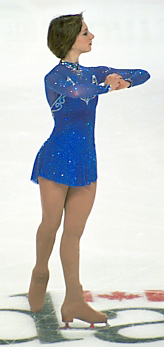
Sarah Elizabeth Hughes is an American former competitive figure skater. She is the 2002 Olympic Champion and the 2001 World bronze medalist in ladies' singles.

Tara Kristen Lipinski is an American former competitive figure skater, actress, sports commentator, and documentary film producer. A former competitor in women's singles, she is the 1998 Olympic champion, the 1997 World champion, a two-time Champions Series Final champion (1997–1998) and the 1997 U.S. national champion. Until 2019, she was the youngest single skater to win a U.S. Nationals and the youngest to become an Olympic and World champion in figure skating history. She is the first woman to complete a triple loop-triple loop combination, her signature jump element, in competition. Starting in 1997, Lipinski had a rivalry with fellow skater Michelle Kwan, which was played up by the American press, and culminated when Lipinski won the gold medal at the 1998 Olympics in Nagano.

Katarina Witt is a German former figure skater. A two-time Olympic champion, Witt is regarded as one of the greatest ladies' singles figure skaters of all time. Her Laureus profile states "she is remembered most for her overall athleticism, her charismatic appeal and her glamorous image on the ice."
Debra Janine Thomas is an American figure skater and physician. She is the 1986 World champion, the 1988 Olympic bronze medalist, and a two-time U.S. national champion. Her rivalry with East Germany's Katarina Witt at the 1988 Calgary Olympics was known as the Battle of the Carmens.

Midori Ito is a retired Japanese figure skater. She is the 1989 World champion and the 1992 Olympic silver medalist. She is the first woman to land a triple-triple jump combination and a triple Axel in competition. At the 1988 Calgary Olympics, she became the first woman to land seven triple jumps in an Olympic free skating competition. She is widely recognised as one of the best figure skaters of all time.

Alexandra Pauline "Sasha" Cohen is a retired American figure skater. She is the 2006 Olympic silver medalist, a three-time World Championship medalist, the 2003 Grand Prix Final Champion, and the 2006 U.S. Champion. She is known for her artistry, flexibility and body lines, and musical interpretation. As of 2022, Cohen is the most recent American woman to medal individually in figure skating at the Olympics.

Elizabeth Ann Manley, CM is a Canadian former competitive figure skater. She is the 1988 Olympic silver medallist, the 1988 World silver medalist and a three-time Canadian national champion.

Janet Lynn Nowicki is an American figure skater. She is the 1972 Olympic bronze medalist, a two-time world championships medalist, and a five-time senior Ladies U.S. national champion.
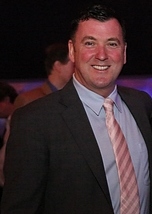
Brian Ernest Orser is a Canadian former competitive and professional figure skater and coach to Olympic champions. He is the 1984 and 1988 Olympic silver medallist, 1987 World champion and eight-time (1981–88) Canadian national champion. At the 1988 Winter Olympics, the rivalry between Orser and American figure skater Brian Boitano, who were the two favorites to win the gold medal, captured media attention and was described as the "Battle of the Brians".
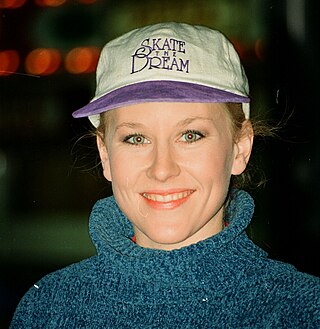
Rosalynn Diane Sumners is an American former competitive figure skater. She was the World Junior champion in 1980, the U.S. National champion in 1982, 1983 and 1984, World champion in 1983, and won a silver medal at the 1984 Winter Olympics.

Kimberly Claire Meissner is an American former competitive figure skater. She is the 2006 World champion, the 2007 Four Continents champion, and the 2007 U.S. national champion. She is the first American and the first woman to simultaneously hold the World, Four Continents, and national titles. In 2005, Meissner became the second American woman to land the triple Axel jump in national competition. She was the youngest American athlete to compete at the 2006 Olympics, coming in sixth place. She won the World Championships the following month, and the U.S. Nationals the following season. She was inducted into the U.S. Figure Skating Hall of Fame in 2020.
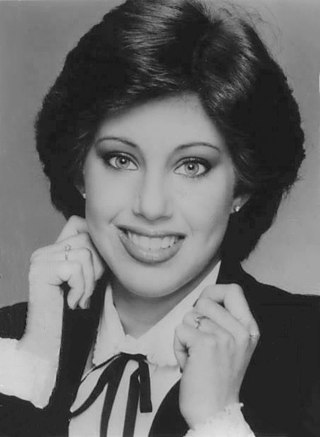
Linda Sue Fratianne is an American former figure skater known for winning two world-championship titles, four consecutive U.S. championships (1977–1980) and a silver medal in the 1980 Winter Olympics.
Jill Ann Trenary is an American former figure skater. She is the 1990 World champion and a three-time U.S. national champion. She was inducted to the United States Figure Skating Hall of Fame in 2002.
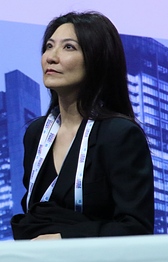
Audrey Tiffany Chin is an American figure skating coach and former competitor. She is a two-time World bronze medalist (1985–1986), a two-time Skate America champion, and the 1985 U.S. national champion.
The following is a glossary of figure skating terms, sorted alphabetically.
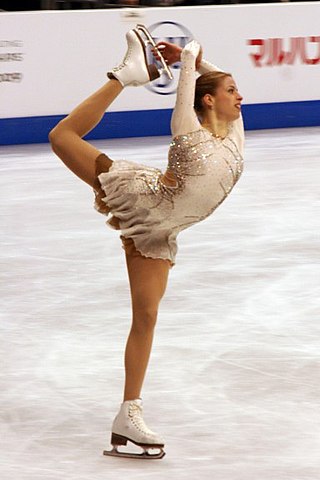
Single skating is a discipline of figure skating in which male and female skaters compete individually. Men's singles and women's singles are governed by the International Skating Union (ISU). Figure skating is the oldest winter sport contested at the Olympics, with men's and women's single skating appearing as two of the four figure skating events at the London Games in 1908.
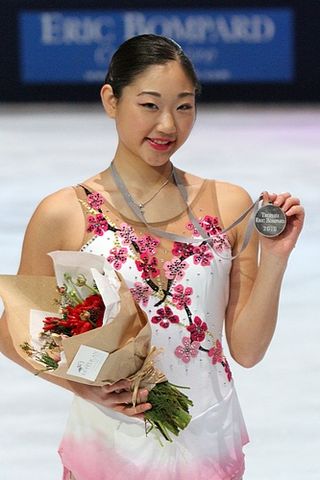
Mirai Aileen Nagasu is an American figure skater. She is a 2018 Olympic Games team event bronze medalist, three-time Four Continents medalist, the 2007 JGP Final champion, a two-time World Junior medalist, and a seven-time U.S. national medalist.
Kay Thomson is a Canadian former figure skater who competed in ladies' singles. She is the 1981 Prize of Moscow News champion, the 1983 Skate Canada International silver medallist, and a three-time Canadian national champion. Her rise to dominance of Canadian ladies figure skating was unexpected as young phenom Tracy Wainmann had been expected to dominate Canadian ladies skating throughout this quadrennial, and beyond, but Thomson dethroned Wainmann at the 1982 Canadian Championships, and was only challenged by rising future superstar Elizabeth Manley thereafter as Wainmann fell off the map for a few years with personal issues and a growth spurt. She represented Canada at the 1984 Winter Olympics in Sarajevo, placing 12th, and at three World Championships, achieving her best result, fifth, in 1984 (Ottawa). She also finished a strong 6th at both the 82 and 83 worlds. At this event she had perhaps her best shot ever of a world podium finish in a heavily weakened post Olympic field and a respectable initial finish in compulsory figures which were never her strength, but a turn between her triple lutz-double toe combination in the short, and a miss on her triple flip in the long, was enough to keep her behind silver medallist Anna Kondrashova, bronze medallist Elaine Zayak, and 4th-place finisher Kira Ivanova.














